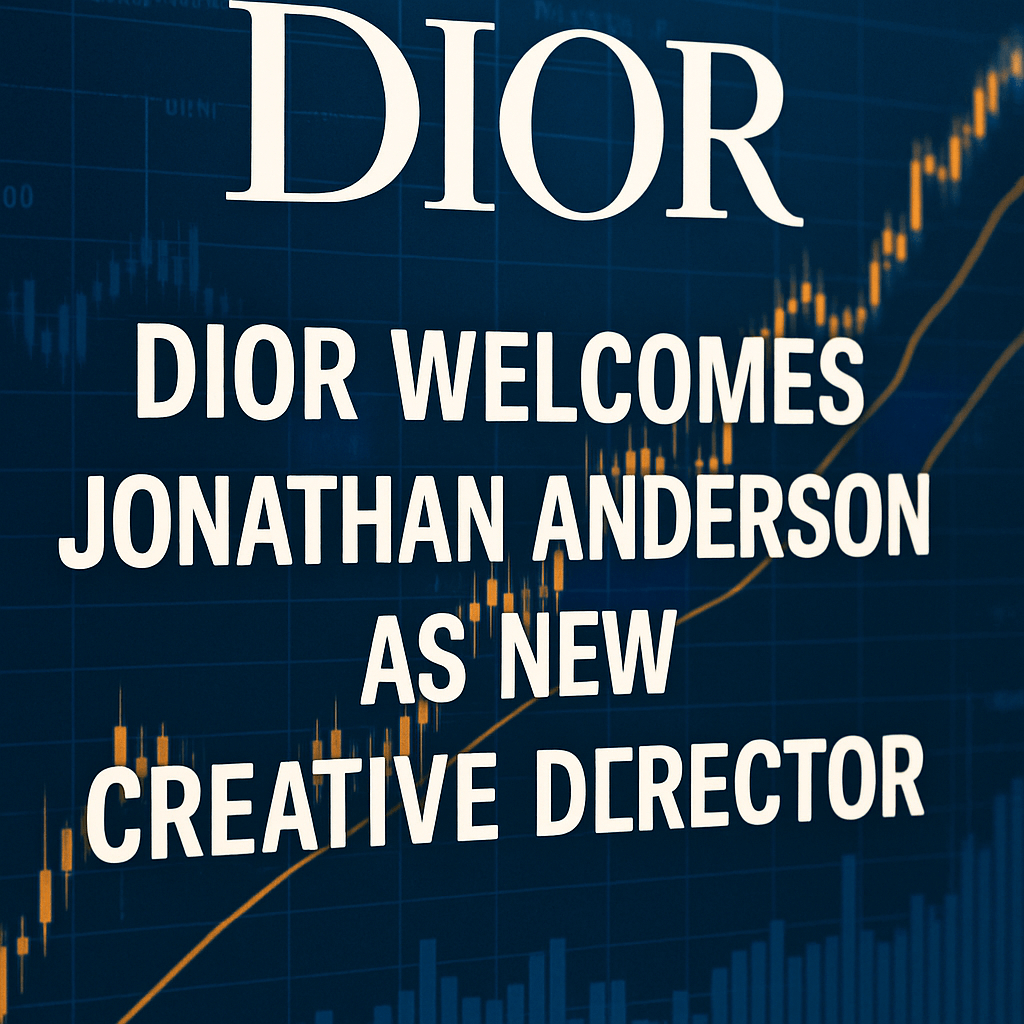Dior Welcomes Jonathan Anderson as New Creative Director

Christian Dior, one of the most prestigious brands within French conglomerate LVMH, has officially appointed Jonathan Anderson as its new creative director. This strategic recruitment signals a significant shift in direction for the storied fashion house, placing Anderson at the helm of its men’s, women’s, and couture divisions. His appointment follows the recent departure of former creative director Maria Grazia Chiuri, who had a noteworthy nine-year tenure with Dior, and highlights a pivotal moment for the brand.
The Context of the Appointment
Anderson, who hails from Northern Ireland, has made a remarkable impact in the fashion industry since taking the reins of Loewe, another LVMH brand, at just 29 years old. Over his tenure at Loewe, he transformed it into a fashionable and sought-after label, characterized by innovative designs that meld traditional craftsmanship with modern aesthetics. His ability to balance the demands of high fashion and commercial viability has been a hallmark of his work, setting the stage for his new role.
As the second individual to oversee the entire Dior brand after its founder Christian Dior himself, Anderson faces the unique challenge of innovating within a legacy brand while maintaining its core identity. His inaugural collection is set to debut in late June, marking the critical beginning of what many insiders view as a revitalization phase for Dior.
The Anderson Effect: Innovation Meets Tradition
Anderson’s contributions at Loewe included a distinct take on luxury that showed a mastery of both creative expression and commercial insight. His signature designs ranged from avant-garde footwear—such as the striking creations featuring smashed eggs on their heels—to ad campaigns that challenged conventional norms, featuring icons like 88-year-old Maggie Smith instead of younger models. Under Anderson’s leadership, Loewe not only thrived but also rode the wave of the current ‘quiet luxury’ trend, which emphasizes understated elegance over ostentation.
- Loewe’s sales surged from approximately €230 million in 2014 to estimated figures between €1.5 billion and €2 billion for 2024, according to forecasts from Morgan Stanley and Bernstein SG.
- Analysts note that the brand was particularly well-positioned to capitalize on shifting consumer preferences towards brands that resonate with authenticity and discreet luxury.
The Financial Implications for Dior
Dior accounts for nearly 20% of LVMH’s substantial fashion and leather goods segment, underlining its importance as a revenue stream. With CEO Bernard Arnault’s daughter, Delphine Arnault, overseeing the brand, the stakes are elevated as Dior navigates a period characterized by a luxury slowdown. These market headwinds have been exacerbated by successive price increases that have led consumers to gravitate towards brands that offer greater affordability.
“New creative energy is a step in the right direction,” remarked Luca Solca, a luxury analyst at Bernstein SG, following Chiuri’s departure. The hope is that Anderson can inject much-needed vigor into the brand and respond to the evolving preferences of affluent consumers.
The Challenges Ahead
However, Anderson’s path is fraught with challenges. Traditionally, luxury houses like Dior have appointed separate creative directors for their men’s and women’s lines due to the complexity and volume of collections, each requiring distinct creative input. The pressure on Anderson to unify these divisions is substantial, given that he must produce ten collections annually while maintaining the brand’s exalted status.
“It takes a few seasons to see what exactly the vision will be,” noted Arnault. “But Anderson appears energized by the opportunity.” His proven record suggests a capacity to merge diverse creative endeavors successfully, a skill that will be crucial as he embarks on this ambitious journey at Dior.
The Broader Landscape of Luxury Fashion
The appointment of Anderson coincides with significant leadership changes across prestigious brands within the luxury sector. Companies like Kering, which owns brands such as Gucci, and Chanel are also refreshing their creative leadership amidst a downturn in high-end spending. This shuffling aims to infuse a new vigor into these storied fashion houses, though it remains uncertain whether these changes will yield the desired results.
Expert Opinions:
“This should help Dior create a more consistent brand representation and improve its competitive stance amongst luxury peers,” states Jelena Sokolova, a Morningstar analyst, emphasizing the potential for a more unified creative strategy under Anderson.
As the luxury market faces its trials, reviving a brand like Dior will necessitate innovative designs, a resurgence in high-end consumer spending, and the creation of a compelling narrative to reinvigorate consumer interest.
Source: fortune